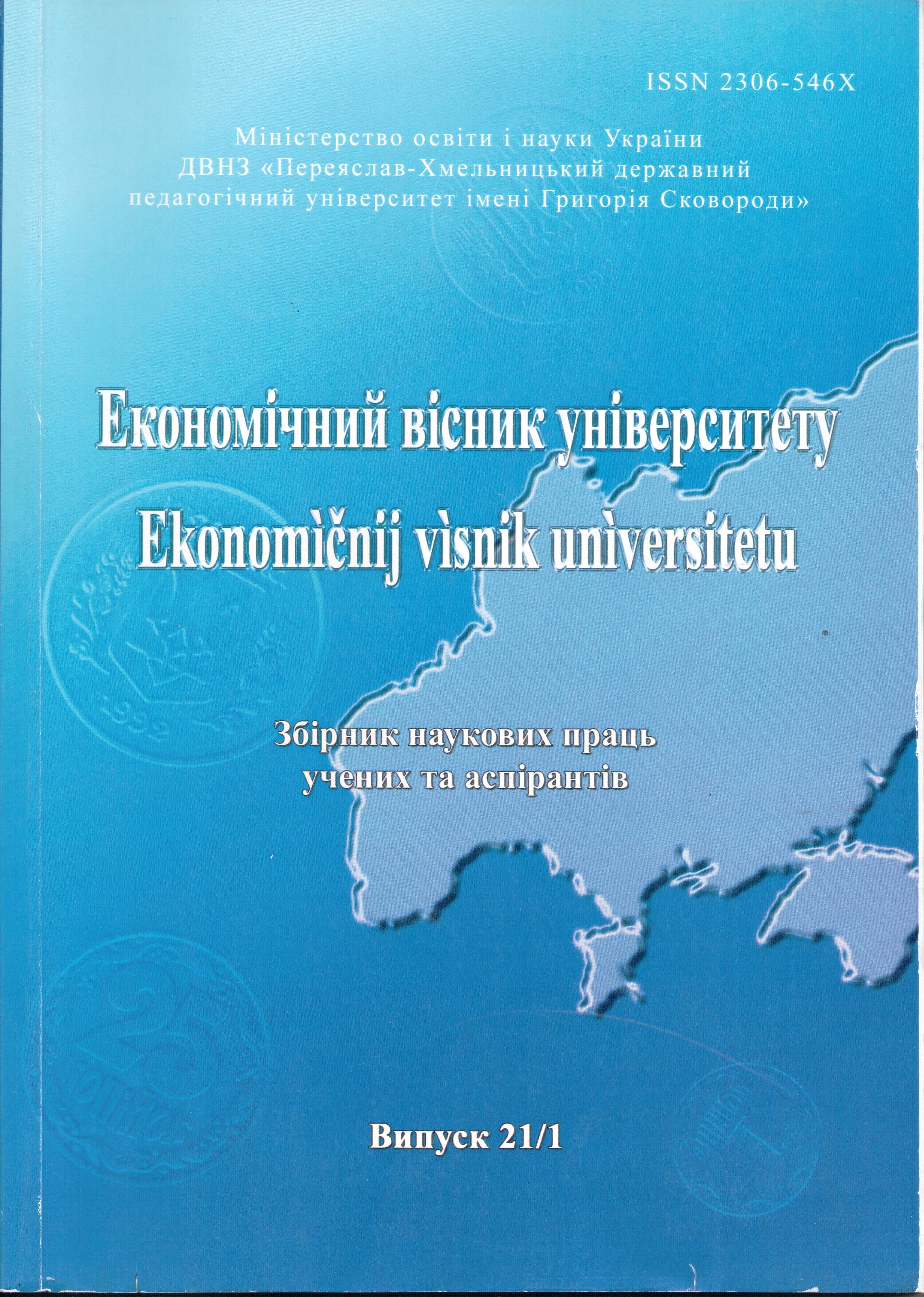Монетарні важелі підвищення конкурентоспроможності економіки та виходу на сталу траєкторію економічного зростання
Monetary levers of improving competitive capacity of economy and acquiring access to the stable path of economic growth
Author(s): Yanina Belinskaya, Anna KachurSubject(s): National Economy, Economic development, Public Finances, Fiscal Politics / Budgeting
Published by: Університет Григорія Сковороди в Переяславі
Keywords: competitive capacity; monetary levers; monetary transmission mechanism; inflation; interest rates
Summary/Abstract: The article studies the channels of monetary transmission mechanism, through which impulses of monetary policy are sent to the realsector of economy. Price elasticity of output of basic industrial branches of Ukraine, as well as interest rates, is analyzed. Low effectiveness ofmonetary levers as means of increasing competitive capacity of economy of Ukraine within the short–term periods is confirmed.Aim of research: studying the channels of monetary transmission mechanism and effectiveness of monetary levers of influence onpricing and competitive capacity of the Ukrainian producers.Methods of research: the main methods include economic analysis and synthesis, comparison and generalization.Methodology of research: the main provisions of economic theory on monetary policy; works of Ukrainian and foreign scientists andpractitioners in the sphere of monetary policy.Results of research: monetary policy has considerable influence on the real sector of economy through several channels. This factexplains active usage of monetary levers for increasing competitive capacity by many governments. Primarily, the monetary levers ofincreasing competitive capacity include policy of currency devaluation, decrease of interest rates, extension of crediting, as well asdecrease of inflation expectations, permitting to improve the expectations of economic agents connected with the future income andactivate the investment process.The comparative analysis of the price dynamics and production volumes of the separate branches showed low price elasticity ofproduction in most branches. Besides, non–sensitivity of interest rates to the reduction of inflation in 2012 means essential increase ofreal cost of credit resources and weakens the effectiveness of monetary levers directed at the stimulation of investment process andconsequent increase of competitive capacity.The results prove that the transmission monetary mechanism shall be improved to support effectiveness of monetary levers forincreasing competitive capacity. Instruments of monetary and credit regulation are aimed at the provision of favorable monetaryconditions for increasing competitive capacity and stimulation of such process, which presupposes development of the system ofbanking risk minimization, in particular currency and liquidity risks. Topicality of risk minimization means the introduction of macro–prudential approach in monetary policy aimed at risk prevention.
Journal: Економічний вісник університету
- Issue Year: 1/2013
- Issue No: 21
- Page Range: 190-196
- Page Count: 7
- Language: Ukrainian

